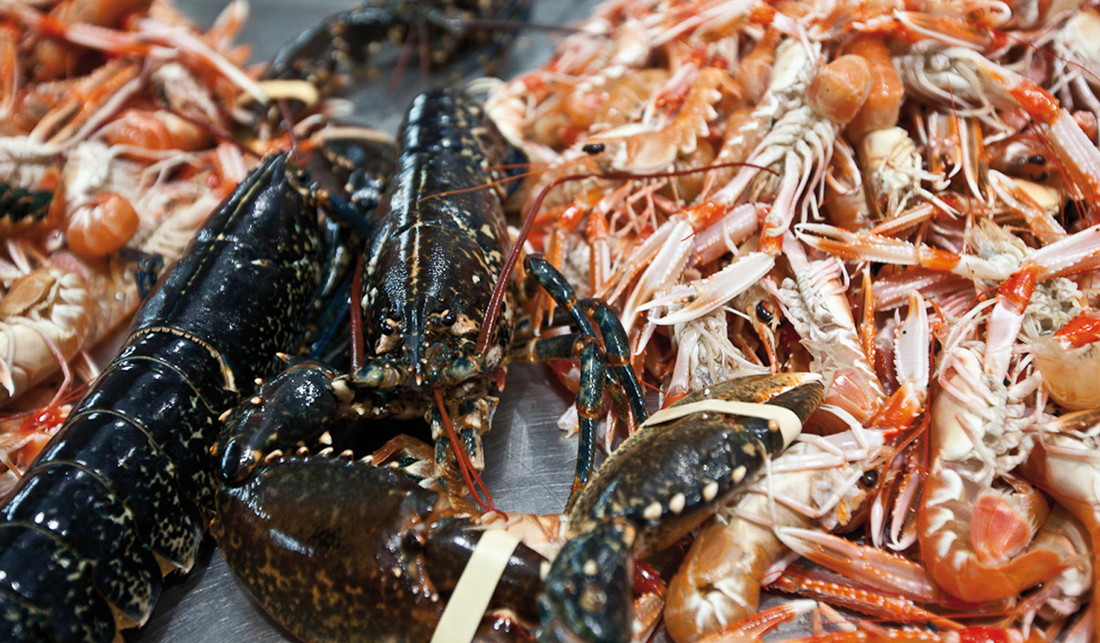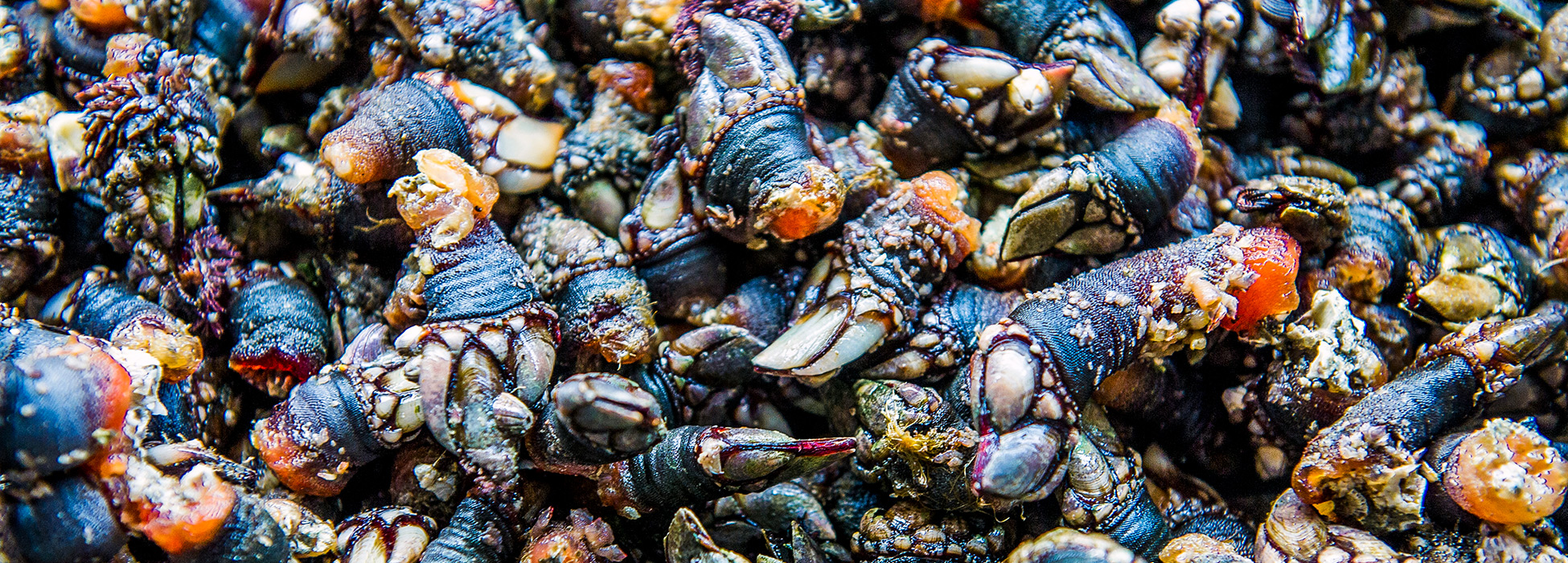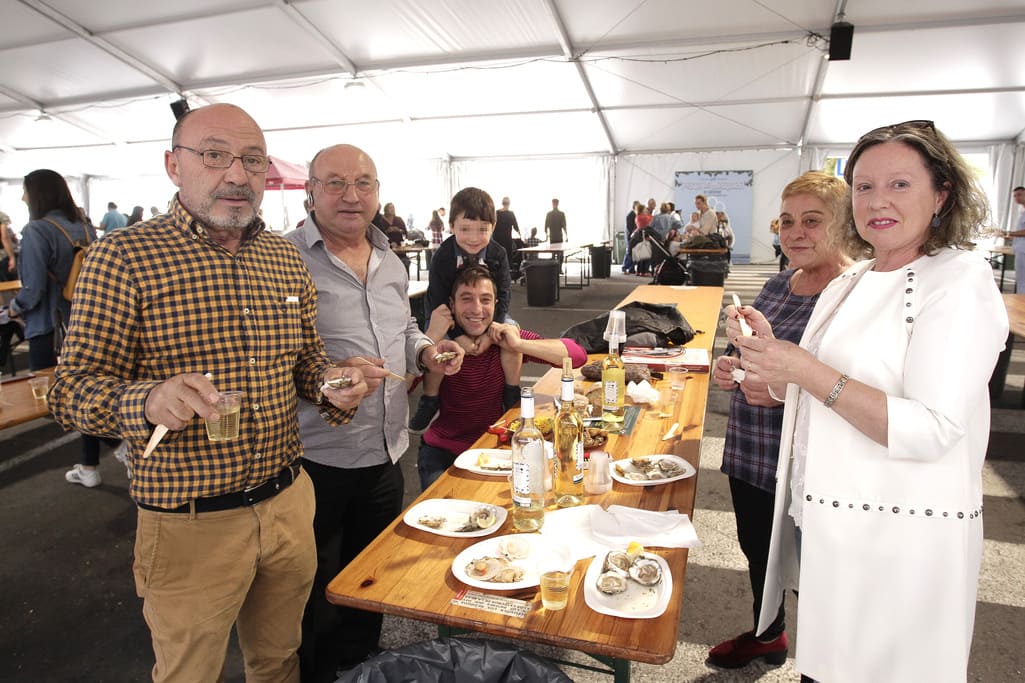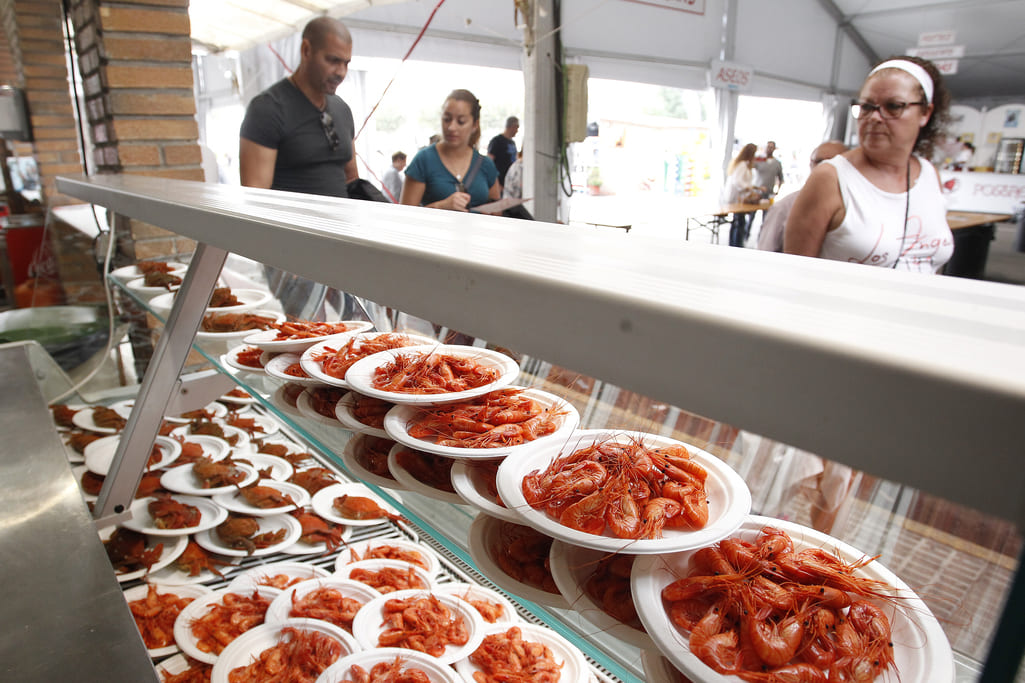O Grove: the hub of seafood
O Corgo Square is one of the nerve centres in O Grove. The fishing port and the bustling fish market, the praza de abastos (market square), the town hall, the tourist information office are located nearby. Moreover, the most important festivals and events are held in this place. There, you can also find the symbolic sculpture of O Grove, the monument to the family of shellfish harvesters. This work, made of stone by the Galician sculptor Alfonso Vilar Lamelas, depicts a woman, a man and a boy holding fishing tools on board a dorna (a typical small Galician sailing boat).
The Festa do Marisco is one of the oldest food events held in Galicia and, maybe, among the most important on an international scale. This festival combines the two elements representing the main activities of the town: fishing and tourism. The combination works well, and this is evidenced by the number of visitors (an average of 200,000 in the last few years).

Every October, the O Corgo Square fills up with marquees defying the autumn rains to offer a great variety of delicious shellfish: clams a la marinera (cooked with a sauce made of onion, tomato, white wine and paprika) or with lemon, razor clams cooked on a griddle, steamed mussels or with vinaigrette dressing, cockles, barnacles, velvet crabs, common lobsters, pulpo á feira (typical Galician octopus recipe served with oil and paprika), and different varieties of empanada (a kind of savoury pastry). Rice with shellfish is the most popular dish of the festival.
The event gathers visitors coming from different parts of Spain, on many occasions as part of a collective organized trip, and also from other countries. In fact, the Festa do Marisco is a good candidate for being recognised as Festival of International Tourist Interest, and it has been promoted in other countries as Italy and France through different events.
History and interesting facts about the festival
The origins of the festival date back to 1963. In the first years of the festival, it lasted only a weekend, the stands were handmade, using wood from the local forests. To promote the festival, the inhabitants of O Grove used to give away bags of shrimps and velvet crabs to the drivers passing by the access road to the peninsula.
After more than 50 years, there are many anecdotes and interesting data related to the festival. The image of the event is a spider crab holding a cunca (small bowl-like container made of clay) of wine. The opening event of the festival consists in a prize-giving ceremony, where people or institutions that stand out for the actions related to the town they carried out are awarded the Centolos de Ouro (a golden prize shaped like a spiny spider crab). However, this crustacean is not part of the festival's menu, since October is its egg-laying period and it is not allowed to capture them.
On the other hand, during the ‘70s, the programme included the Festival da Canción do Marisco (Shellfish Singing Festival), emulating those celebrated in San Remo and Benidorm at the time, and it became quite successful.
What to do in O Grove
There is a great variety of experiences available and suitable for everyone's tastes. The Museo da Salga, in Punta Moreiras, is an ethnographic interest site discovering the canning industry which was once part of the town. There you can also find the aquarium, which includes species of cold and warm waters. On the Siradella Hill you can visit the Aula da Natureza, a nature interpretation centre, and the viewpoint Pedra Cabaleira.
Visiting the island Illa da Toxa is a must. There you can visit the chapel covered with scallop shells, the spas and the playground Aldea dos Grobits. You have to come and see the handmade shell souvenirs which are sold in the island!
O Grove also has a lot of beaches. If you follow the wooden promenade of Con Negro you will discover cliffs and small coves. You can also go on a boat trip in the ría (coastal inlet) starting in O Corgo, located next to the area where the festival is held.










